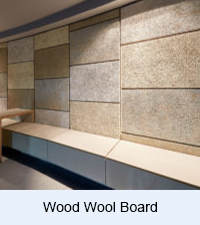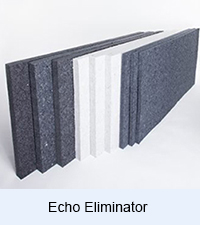Softwall soundproofing
Soft wall soundproofing has been one of the cost effective, expertise and exchanges barriers available at affordable cost in acoustical soundproofing market. In today’s digital world the control of the sound has been done by acoustic fabric and sound absorbing padding and decorative finish for treating acoustically treating surfaces. The traditional method of wall mates has been vanished which used wood lath, staples, gimp and welting. The soft wall is available at low cost and affordable prices.
Cost of softwall soundproofing
Since it is available for less cost now a days they are used in many acoustical techniques. Soft wall has got a property that they can be cover up for any type of wall as per the client requirementon soundproofing. There is no need of any wall preparation required for the installation of these products.
Quality os softwall soundproofing products
There is no need of lath or staples for these soft wall soundproofing products. As well as no need of welting and gimp. This soundproofing product gives the best acoustical control finish for the noise reduction. There can be maximum energy savings by using the soft wall soundproofing products. There is no need to hire any local contractor to install the fabric walls .because the wall mate has got the properties more than them and many advantages over the competitor’s like user friendly, uniqueness, the hinged track property allows any body to install a professional look soundproofing walls.
Soundproofing fabrics
We can have options of choosing our own soundproofing fabrics. And available at any stretchable acoustical wall systems with unlimited panel sizes.
It’s completely the choice of the installer to choose it. As the soundproofing fabrics are removable and replaceable.
Ecofriendly soundproofing
The whole soundproofing system is reusable. Due to this property they play an important role in the acoustical products. The main two problems so called reflection and reverberation can be solved by using the acoustical treated and this wall fabric revolutionizes the way they can be applied both as a decorative and acoustical wall finishes. Acoustical treatment of walls have become one of the necessities that helps in listening to the quality speakers, and the systems which are transmitting the sound.
Echo eliminator
The backing soundproofing material used in this acoustical is echo eliminator. The features of these wall mates are economical, multi purpose can be used in multiple ways, gives high soundproofing performance and durable can be used as wear and tear product, since it is very strong and easy to install. These soundproofing products are commonly used in offices, conference rooms, auditoriums, apartments etc.
The thickness of acoustical soundproofing available are one inch and two inches. The sizes of soundproofing are available in customized manner as per the clients requirement. Acoustical soundproofing materials are available in different colors also.
Our acoustical soundproofing products and services
Acoustic foam, Bangalore, Chennai, Hyderabad, Cochin, Acoustics, fibre cement board, fiber cement board, customized acoustic foam, raised access floor, Acoustic wall paneling, Acoustic walls, Sound proofing, Noise control, Echo Elimination, Noise Isolation, Sound Isolation, Home Theatre Construction, Home theatre, Studio construction, Recording studio, Reverberation control.
Echo control, Home Cinema, Noise and Vibration, Music studio construction, Fabric wall panels, Absorbent panels, Noise Free Ceilings, Sound proof Doors, Noise Control in Homes, Noise control in theater, Sound leakage control, Indoor Sound Block, Sound Absorbing Materials supplier, Wall panels, Reduce Sound level, Block the sounds getting out, Sound Controlling door, Sound Control Material, Sound Proof panels, Noise free homes, Recording studio Sound Control, Echo Controller, Echo minimizer, Echo reducer, How to control echo, Noise free glasses.
Noiseless Auditorium, How to control sound by wood, How can I record without noise, Noise proof window panels, Sound proofing suppliers in Bangalore, Sound proof at home, Sound control at gym, Best company for sound proof, Top companies in noise control, Top companies in acoustics, Top companies in noise control, Sound proof screens, Home theater essentials, Pleasant homes, Don’t allow the sound to go out, Block the sound, Soundproofing solutions, Sound proofing top companies list, List of companies in acoustics at Bangalore, Noise control in school, Sound proof wall treatment, Low cost soundproof materials, Best acoustics companies in India, Noise control solutions.
Vibration control, What should I do for control noise, How to build a noiseless home, How to maintain sound to not go out, Suggest some sound leakage blocking panels, Isolate the sounds, Transmission control of sound, Loudness controller, Noise barriers in India, Sound pressure level controller, Control sound by interiors, Control traffic noise, Soundproof insulation, Noise control sources, Soundproofing Products, Sonex, Ceiling, Wall Panels, Sound Control Curtains, Equipment Enclosures, Acoustical Baffles and Banners, Solid Wood, Veneer Acoustical Ceiling.
Wall Systems, Professional Audio Acoustics, Vibration & Damping Control Fire Retardant Acoustics, Hearing Protection, Moisture and Impact Resistant Products, Floor Impact Noise, Noise Reduction, Sound Absorbers, Noise Barriers, Fabric Wrapped Wall Panels, Acoustical Foam, Egg Crate, Acoustical Sealants and Adhesives, Outdoor Noise Control, Assistive Listening Devices, OSHA, FDA, ADA Compliance, Acoustical Design and Consulting, ECHO ELIMINATOR, SOUND SILENCER, DBA PANELS, POLY MAX ACOUSTICAL PANELS.
DECORATIVE FABRIC PANELS, HANGING ACOUSTICAL BAFFLES, SOUND ABSORBING FOAM, SONEX FOAM PRODUCTS, NOISE BARRIER-NOISE BLOCKERS, SCHOOL NOISE MANAGEMENT, FLOORING UNDERLAYS, SEALANTS–ADHESIVES–GREEN, ACOUSTICAL CEILING TILES, SOFTWALL – WALLMATE, VIBRATION MOUNTS–HANGERS, HVAC PRODUCTS – SILENCERS, ACOUSTIC – SOUNDPROOF DOORS, ACOUSTIC ENCLOSURES, WALL INSULATION, ELECTRONIC SOUND LEVEL METER, SOUND TEST-ACOUSTICAL ANALYSIS.
ADJUSTABLE DOOR SEALS, DESIGNER ACOUSTICAL CURTAINS, ACOUSTIC WINDOWS – INSERTS, RSIC SOUND ISOLATION CLIPS, ACOUSTI-BOARD, OUTDOOR BARRIER WALL SYSTEM, ONE STEP DECORATIVE SYSTEM, ACOUSTIMETAL PANELS, SOUNDSCREEN NOISE MACHINE, ACOUSTI-GASKET TAPE, T-MOLD SYSTEM, ACOUSTICAL FABRIC SELECTION, ADJUSTABLE SPRINKLER CUTTER, WOOD WOOL PANELS, TECHNO ACOUSTIC WALL PANEL.


